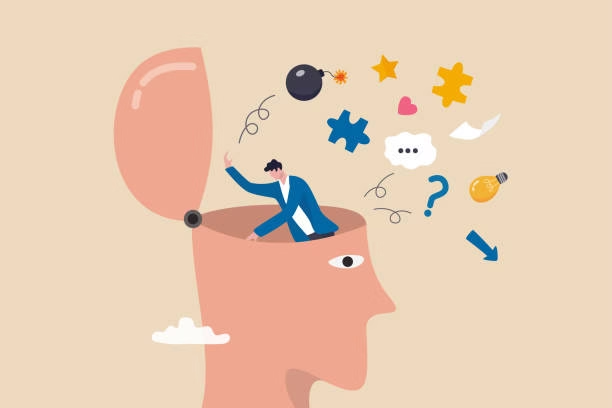Your cart is currently empty!

Understanding Burnout Through a Holistic Lens
As a holistic health practitioner, you’ve likely seen a sharp rise in clients experiencing burnout—a state of emotional, mental, and physical exhaustion that goes beyond simple stress. It’s a modern epidemic fueled by chronic overwork, dysregulated nervous systems, and disconnection from self.
From a holistic perspective, burnout is not just a mental health issue. It affects every level of being: body, mind, emotions, and spirit. Supporting clients through burnout recovery means addressing more than symptoms—it means restoring vitality, clarity, and connection.
Common Signs of Burnout in Clients
Clients in burnout often present with:
- Chronic fatigue that doesn’t improve with rest
- Brain fog or lack of mental clarity
- Low mood, irritability, or emotional numbness
- Disrupted sleep cycles or insomnia
- Loss of motivation or purpose
- Physical symptoms like headaches, gut issues, or muscle tension
Left unaddressed, burnout can evolve into more serious physical and mental health conditions, including adrenal dysfunction, depression, and autoimmune flare-ups.
Root Causes of Burnout (Holistically Speaking)
In your work as a practitioner, it’s important to help clients explore deeper imbalances, such as:
- Nervous system dysregulation (sympathetic overdrive or dorsal shutdown)
- Poor boundaries and people-pleasing behaviors
- Unprocessed emotional trauma
- Nutritional deficiencies, especially B vitamins, magnesium, and adaptogens
- Disconnection from joy, purpose, and embodied living

Holistic Tools to Support Burnout Recovery
Below are evidence-based, integrative practices you can use or recommend to help clients restore their energy and clarity:
Holistic Tools to Support Burnout Recovery
Below are evidence-based, integrative practices you can use or recommend to help clients restore their energy and clarity:
1. Nervous System Regulation
Practice: Breathwork, vagus nerve stimulation, and somatic tracking
Why it works: Helps shift clients out of chronic fight-or-flight and into parasympathetic rest-and-digest mode
Tip: Begin sessions with orienting or grounding practices to co-regulate and set the tone.
2. Nutritional Repletion & Adaptogens
Focus: Rebuild depleted systems with foods and herbs that support adrenal and mitochondrial function.
Key nutrients: B-complex, magnesium glycinate, vitamin C, iron (if low), omega-3s
Adaptogens: Ashwagandha, rhodiola, eleuthero, holy basil
Note: Pair herbal suggestions with lifestyle modifications for optimal results.
3. Digital & Sensory Detox
Practice: Encourage daily screen-free time, silent walking, or time in nature.
Why it works: Reduces sensory overload and gives the brain a chance to reset.
Tip: Recommend clients keep a “tech curfew” and use blue-light blockers in the evening.
4. Energy Hygiene & Boundaries
Support: Teach clients how to protect their energy—physically and emotionally.
Why it works: Prevents constant energetic drainage from external sources.
Tools: Journaling, visualization, cord-cutting meditations, saying “no” without guilt.
5. Mind-Body Connection Practices
Modalities: Trauma-informed yoga, Qi Gong, TRE®, breathwork, or somatic movement.
Why it works: Reconnects body and mind while safely discharging emotional tension.
Tip: Offer group classes or guided recordings for client self-practice.
6. Restorative Sleep Hygiene
Focus: Deep, regenerative sleep as the foundation of healing.
Tools: Herbal sleep teas (e.g., valerian, chamomile), consistent sleep routines, and circadian rhythm support through light exposure
7. Mental Clarity Through Purposeful Living
Support: Explore purpose, values, and authentic self-expression with clients.
Why it works: Mental fog often clears when we realign with meaning and intrinsic motivation.
Practice: Vision mapping, intention journaling, or guided self-inquiry.
How Practitioners Can Support Burnout Recovery
As a holistic practitioner, you can:
- Co-create self-care rituals that feel nourishing, not like another task
- Validate burnout symptoms while empowering clients to take aligned action
- Offer trauma-informed care when exploring root causes and emotional patterns
- Educate on energy cycles, encouraging clients to embrace rest and stillness as healing—not laziness
Burnout Recovery Is a Reconnection Process
Healing from burnout is not a quick fix—it’s a recalibration of how we live and relate to ourselves. The gift of holistic practice is the ability to meet clients where they are and help guide them home to their own energy, clarity, and wholeness.
